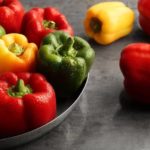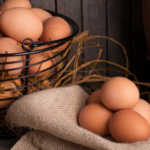Bell peppers, also known as sweet peppers, have thick flesh, a sweet taste, and are not spicy. Bell peppers come in a variety of colors, including green, red, orange, yellow, and brown. They are rich in vitamin C, which supports improved vision, and contain 2.5 times more vitamin C than citrus fruits.
Bell peppers are typically grown in regions with cold climates, and their taste depends on growing conditions, care, variety, and post-harvest preservation. While bell peppers are not difficult to grow, they require careful attention to produce juicy, abundant fruit.
In this article, we will share a simple guide on how to grow and care for bell peppers at home.
1 What You’ll Need
- Plant pots
- Seeds
- Potting soil
- Fertilizer
Pro Tip:
Seeds: You can purchase bell pepper seeds from a gardening store or collect seeds from a fresh bell pepper.
Soil: While bell peppers are not picky about soil type, it’s best to use well-aerated soil with plenty of humus and a pH of 5.5 – 7. You can also add organic fertilizers to stimulate the plant’s growth.
Plant Pots: Choose pots that are at least 25-30cm deep, spacious, and have sufficient drainage holes at the bottom. Avoid using dark-colored pots that absorb heat, as bell peppers do not tolerate high temperatures well.
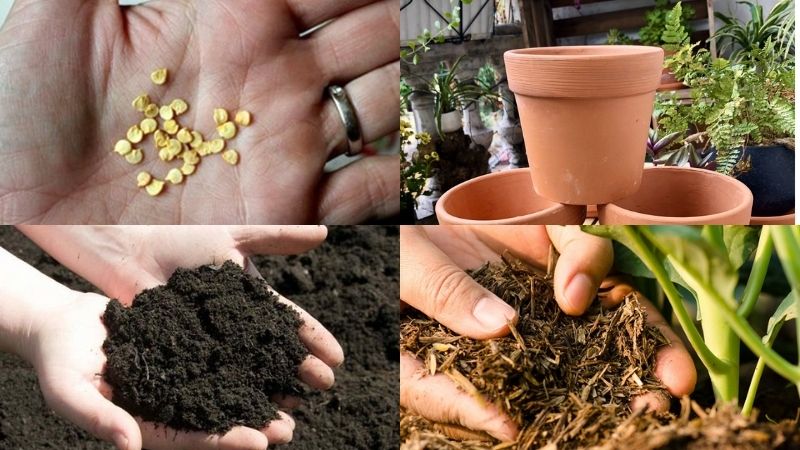 Supplies needed for growing bell peppers
Supplies needed for growing bell peppers
2 Planting Steps
Step 1 Prepare the Soil
Fill your pot with soil, mix it thoroughly, add a suitable amount of fertilizer, and water it lightly to moisten the soil.
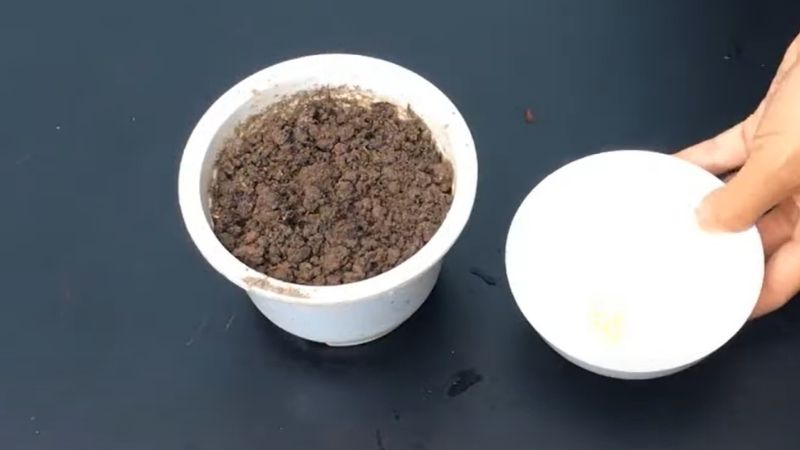 Preparing the soil
Preparing the soil
Step 2 Prepare the Seeds
Soak the bell pepper seeds in warm water at about 50°C for 2-8 hours to speed up germination.
Pro Tip: The ideal ratio for the warm water soak is 7 parts cold water to 3 parts hot water.
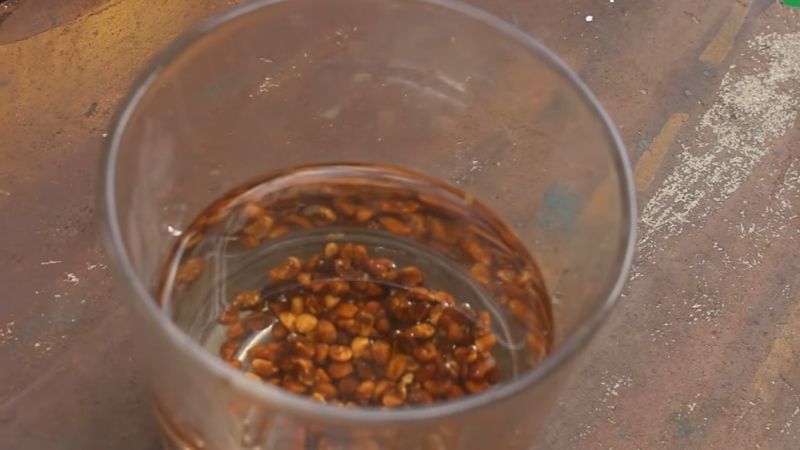 Preparing the seeds
Preparing the seeds
Step 3 Sowing
Once the seeds have germinated, spread them on the surface of the soil in your pot. You can also add a thin layer of bagasse, husks, or coconut coir if available. Use a spray bottle to mist the surface of the soil a few times to maintain moisture.
Pro Tip: If you don’t have bagasse, husks, or coconut coir, you can substitute it with a thin layer of soil.
 Sowing the seeds
Sowing the seeds
Step 4 Fertilizing
After 10-12 days of sowing, apply the first basal fertilizer. The second application should be 12-15 days after the first, and the third application 20 days after the second. After each harvest, remember to add fertilizer and loosen the soil to keep it airy.
Pro Tip: Bell peppers require ample nutrition to thrive, so choose fertilizers rich in organic matter, such as worm castings or compost.
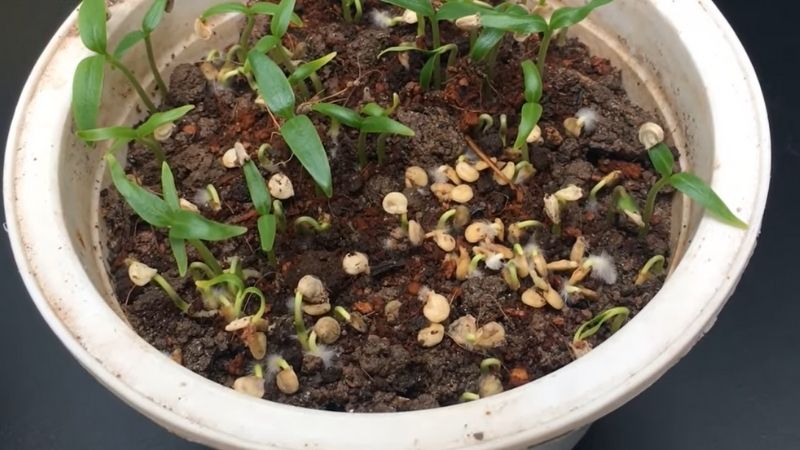 Applying basal fertilizer after 10-12 days of sowing
Applying basal fertilizer after 10-12 days of sowing
Step 5 Potting
After about 25 days, when the plants are 10-15cm tall, select the healthiest ones and transplant them into individual pots to encourage faster growth. Water twice a day, once in the early morning and once in the evening, avoiding the midday heat.
 Potting the seedlings
Potting the seedlings
Step 6 Pruning
After 30 days, start pruning by removing any damaged, diseased, or insect-infested branches and leaves to promote a healthy, well-ventilated plant.
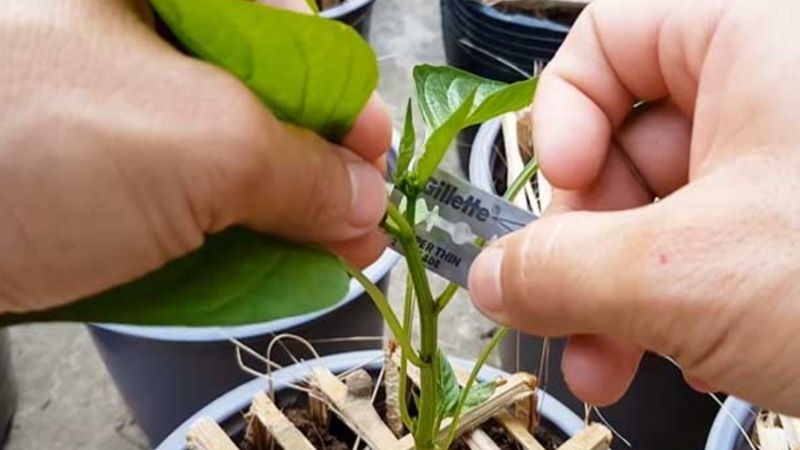 Pruning damaged or diseased branches and leaves
Pruning damaged or diseased branches and leaves
Step 7 Harvesting
You can harvest bell peppers after 60-90 days of care. Depending on your preference, you can pick them when they are green or wait until they turn red or yellow.
Pro Tip: When harvesting bell peppers, cut both the stem and the fruit to encourage new growth.
 Harvesting bell peppers
Harvesting bell peppers
3 Care Instructions
- Water properly and sufficiently: Water twice a day, in the early morning and cool evening during summer. Avoid watering at midday when it’s hottest. In winter, water in the cool evening. Don’t overwater.
- Ideal temperature: The ideal temperature range for germination and growth is 15-30°C.
- Prune old leaves: Remove old, withered leaves, leaving only the young, fresh ones to encourage branching and vigorous growth.
- Weed control: Keep the area around the plant free of weeds by weeding once or twice a week, as needed.
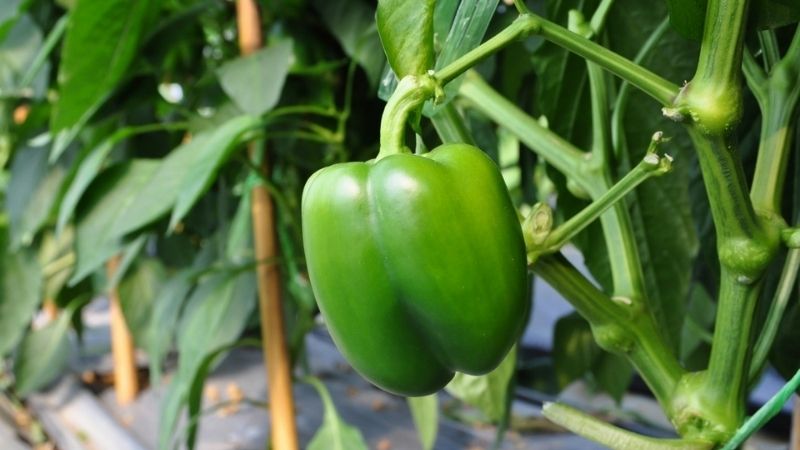 Care tips for bell pepper plants
Care tips for bell pepper plants
4 Delicious Bell Pepper Recipes
With their sweet taste and cooling properties, bell peppers are perfect for making salads, stir-fries, and soups. Some delicious bell pepper dishes include bell pepper stir-fry, stuffed bell peppers, and bell pepper salad.
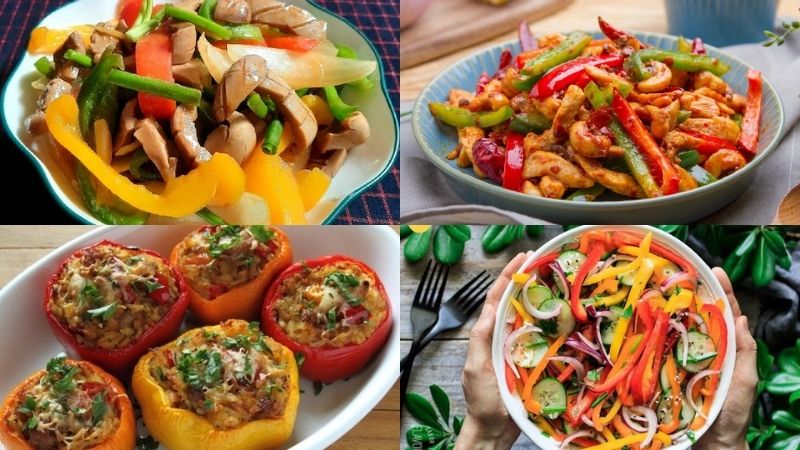 Tasty dishes made with bell peppers
Tasty dishes made with bell peppers
That’s it! With these simple steps, you can successfully grow bell peppers at home. We wish you a bountiful harvest of delicious bell peppers!
























